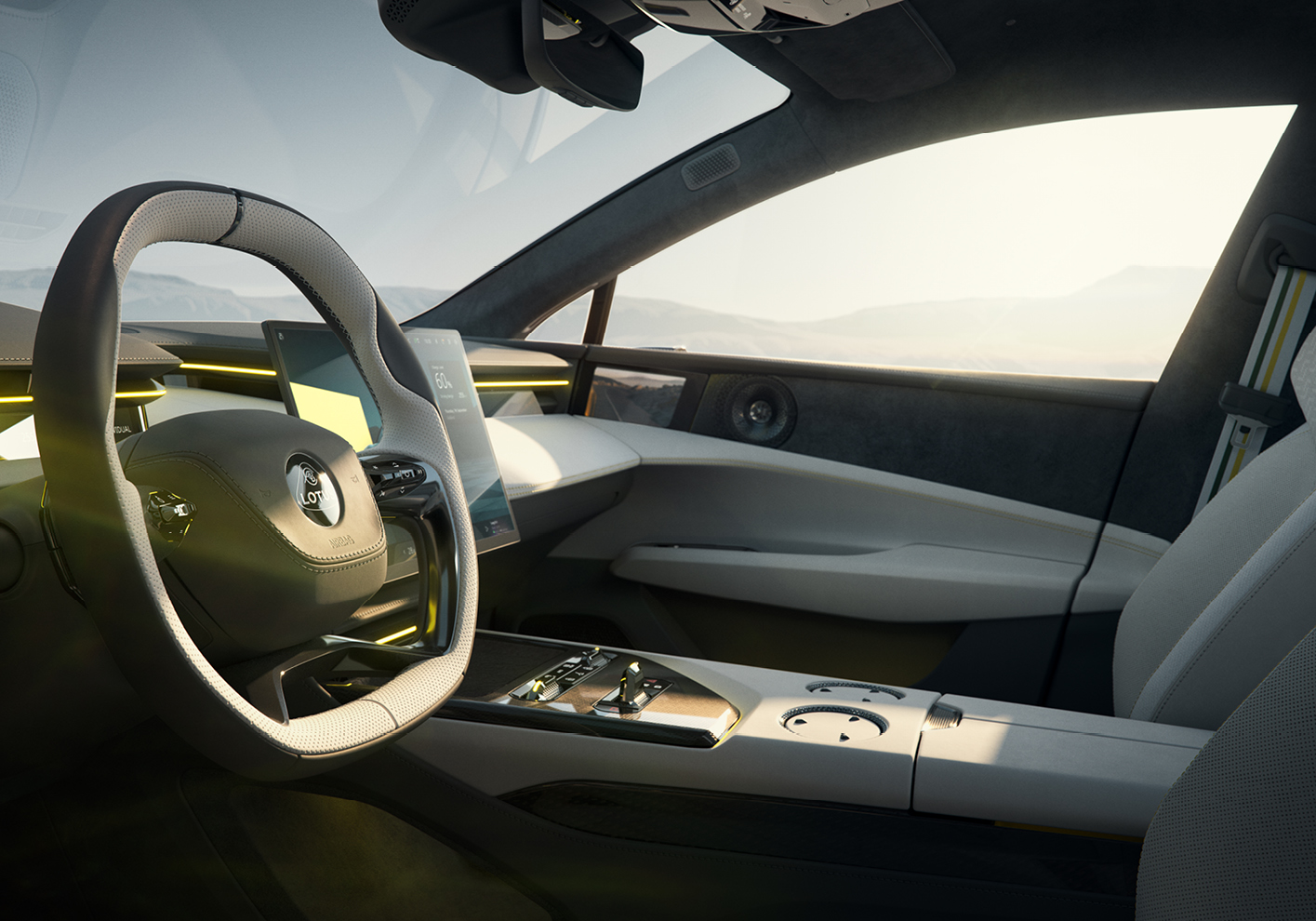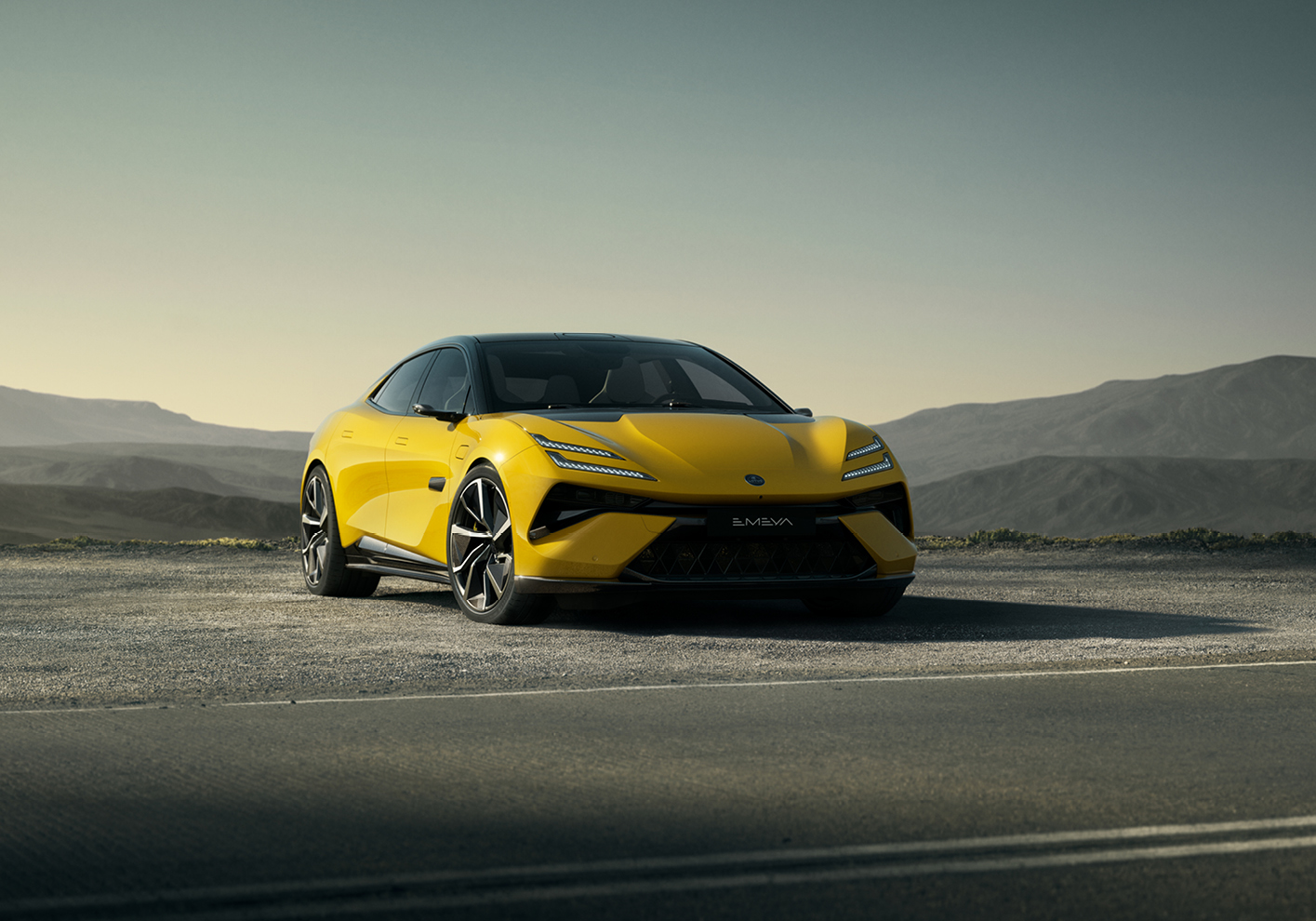WORDS
David Green
Lotus loves an E. The roll call of cars that start with Lotus’s first letter of choice is long and evocative of the joy of driving. Elan, Elite, Europa, Eclat and, of course, the Esprit conjure up images of James Bond emerging from the sea onto the Costa Smeralda beach in Sardinia with Roger Moore dropping a fish out of the window in one of the great 007 scenes. Later, we had the fabulous Elise, Exige and Evora, who were giant-slaying in their diminutive ability to cross country at warp speed while giving their drivers bigger smiles and thrills than if they were in more powerful, more expensive supercars.
Lotus celebrated its 75th birthday last year. Long after founder Colin Chapman left the stage, the company has new Chinese owners, and the “E”s are attempting a major comeback. Unveiled first was the staggeringly beautiful Evija hypercar. Its presence signifies Lotus’s return to the top table of sports car makers. This time with “sculpted porosity bodywork”. Whatever that means, it looks fantastic. More importantly, it featured all-electric power for the first time on a Lotus. And a not insignificant amount of that power: incredibly, it has almost 2,000bhp. The Emira that followed reminded us that Lotus is still the master of lightweight, affordable petrol-powered cars, but we all know the future is electric. It is obviously a hard pill for the Lotus faithful to swallow. Electric power is unavoidably heavy. For now, there’s almost no way of getting around it. It’s a tricky conundrum for the marketing folk when Colin Chapman’s central maxim was ‘Simplify, then add lightness’.
However, if there is one thing you can rely on from the team at Hethel, Norfolk, it’s gumption and can-do spirit.
The all-electric Eletre Hyper-SUV was first out the gates, and as we all know, any car company needs an SUV to survive. Unveiled to much fanfare, the Eletre is very fast, very luxurious and very big. Large SUVs never win beauty contests, but the Eletre does a decent job of hiding its mass with wings and vents, giving a sporty presence to match its impressive performance. Like many new electric super SUVs, that performance is mind-bending, especially when you have five people aboard with shopping. It is forecast that the Eletre will be Lotus’s bestselling car, and that’s the case at the moment, helping the company to achieve its best-ever year of sales at over 6,000 units. This is respectable, but the number is far from the company’s ambition to sell 150,000 cars annually by 2028. That’s a tall order and one that will require a suite of strong-selling models.
The Emeya all-electric Hyper-GT is the latest to be launched, and it’s a four-door saloon and competitor to the Porsche Taycan. Like the Eletre, the Emeya is available in two flavours, the “S” and the more potent “R”. Both are incredibly quick. On the Autobahn, you are likely to hit the car’s 155mph limit moments after you’ve left the slip access road, and you can happily sit there for as long as nothing is in front of you, such are the high-speed manners and comfort of this car. It has electronically controlled air suspension with sensors that track the road 1,000 times a second – and it shows. The S is enough for most mortals and is arguably the more rounded car, the R being almost too much in all aspects to exploit on anything but the smoothest, widest tarmac. The Emeya’s aspirations to be an effective grand tourer are helped by excellent charging capability. It can charge from 10 to 80 per cent in an amazingly speedy 14 minutes if you can access a 400kW charger. This sort of time changes the dynamic on long runs. You are no longer looking for things to do at charging stops. Stick it on a charge, buy a coffee and croissant and you will be back on the road before you have time to consume either. It’s getting close in timing to a fuel stop of old, we just need the British charging infrastructure to catch up.

The design is bold and futuristic, echoing the Eletre, especially on the inside, and has a similar high quality, luxurious feel with Alcantara and leather and excellent massage seats. It’s a far cry from a spartan Lotus Elise. The exterior has a low-slung coupe feel, and there are strong rumours that a shooting brake version (estate car to you and me) will follow. So it’s very much following the Taycan playbook, and why not, as Porsche has created that market. It’s certainly an alternative worth considering.

Most unusual is the fact that a true highlight of the Emeya is the sound system. The Dolby Atmos-enabled 3D surround sound running through the KEF Uni-Q speaker system is nothing short of extraordinary. It’s shockingly good. The only downside is that it may be challenging to listen to and drive at the same time, so all-consuming is the experience. It signifies Lotus’s ambition to not be a one-trick pony and move beyond just being a “driver’s car”.
Lotus is a global operation now, with the original Norfolk HQ being complemented by a design centre in Coventry, engineering operation in Germany and production facilities in China. However, all cars need to get the nod from Hethel-based attributes guru Gavan Kershaw, who has been around long enough to know how a Lotus should feel from behind the wheel.
The brave new world of electric power is testing the ingenuity of car makers to produce something that stands them out from the crowd but also retains company values, and it’s a high-wire act with dire consequences of failure. At least Lotus attacked it with gusto, and it can perhaps charm a new generation into loving its new approach. There may be some hand wringing as to Lotus’s soul, but many car enthusiasts will be happy that the company has a chance of survival. Companies such as Porsche can make a wide range of vehicles and not get held up to the same scrutiny as Lotus regarding the various cars it produces. Maybe we should cut the plucky British car manufacturer some slack until it reveals its full range of products?
Lotus Eletre from £89,500; Lotus Emeya from £94,950; lotuscars.com





